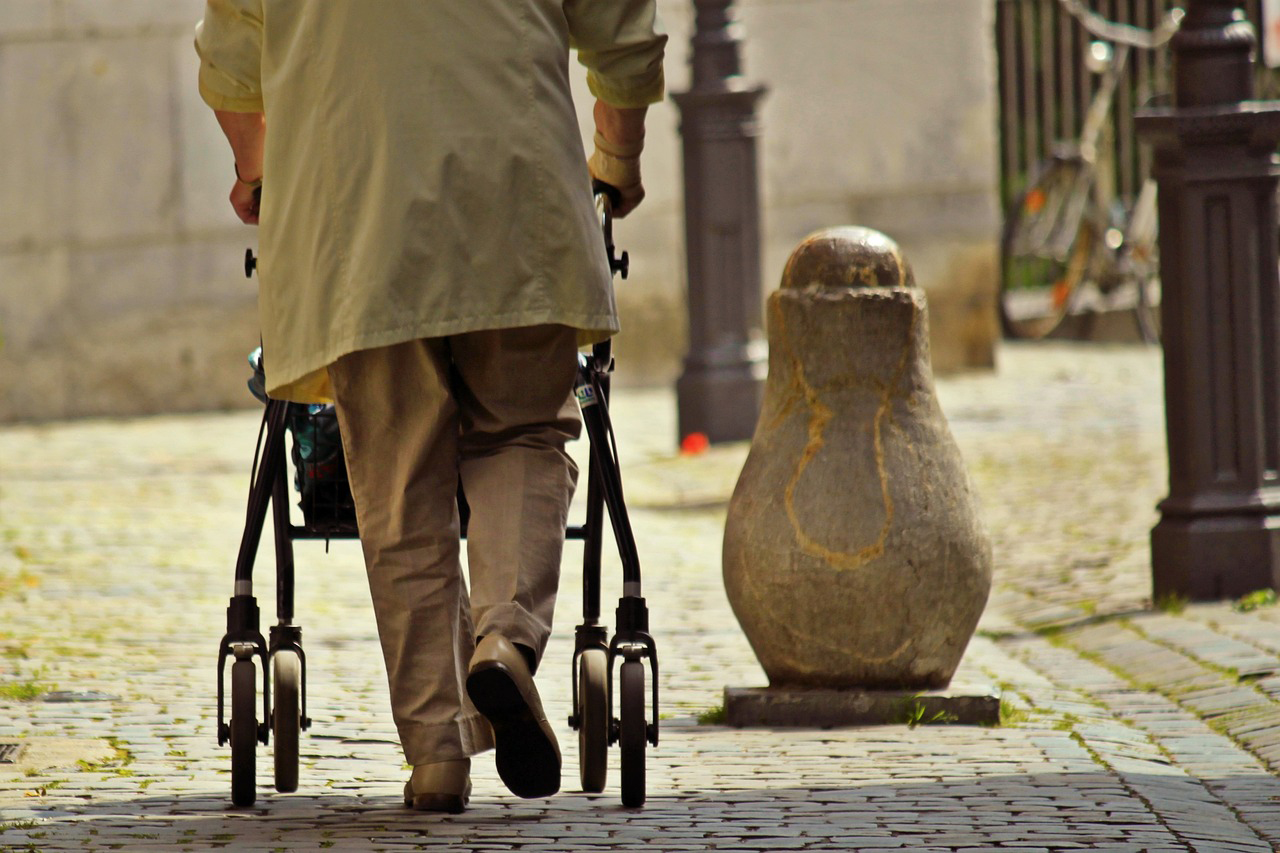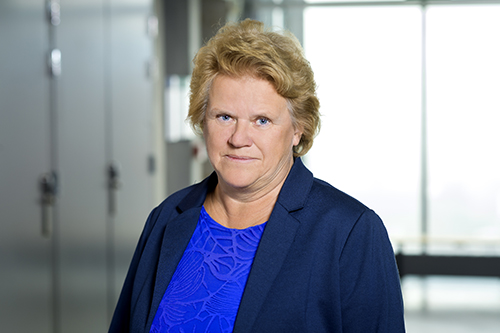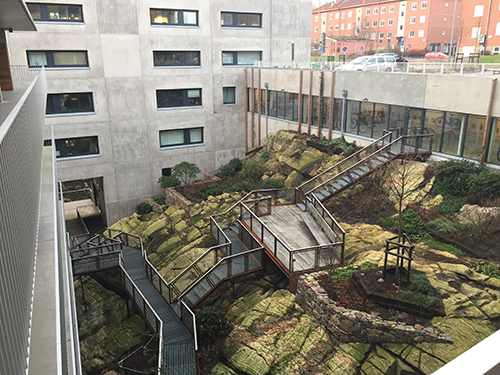Categorising people works against the vision of a city for everyone
How well does the Swedish urban environment suit its citizens? Is it welcoming and inclusive, or are there barriers that make life more difficult for citizens? New research from the Faculty of Engineering (LTH) at Lund University, Sweden shows that urban design and the built environment do not always comply with current legislation. However, if universal design principles are applied during the planning stage, the urban environment could be made more accessible.
Jessika Sellergren – Published 23 January 2024

Buildings designed for “normal users” may, at the same time, exclude others. Those affected are often older people and persons with disabilities. So argues Lilian Müller, who recently defended her thesis on universal design in the built environment as part of the research field of rehabilitation engineering. She says:
“Despite it being 15 years since the UN Convention on the Rights of Persons with Disabilities came into force, we still see ongoing exclusion and discrimination of persons with disabilities in urban planning.”
One of the problems highlighted by Lilian Müller is that the planning and construction process, which underlies new buildings or environments is based on a typical user, a kind of “normal” user.
“It is clear that people with disabilities are not included in that definition.”
But it doesn’t have to be this way, says Lilian Müller.
Universal design contributes solutions
Lilian Müller’s thesis shows that construction projects based on universal design – a concept that helps to incorporate human diversity into the built environment – are more accessible and inclusive.
“But it requires the societal stakeholders involved to have knowledge about universal design and to be a driving force in the process. The public sector must take the lead in achieving inclusion and equality. Otherwise, the vision of a city for all risks being lost in the planning and design phase.”
Another dilemma highlighted by Lilian Müller is that the different stakeholders in a construction project, such as the building industry and the municipality, may have different visions and goals – which can cause problems for the end users of the building or site.
“This can lead to a democratic dilemma where social perspectives are lost, and citizens are affected, even though it is the people in the cities who are supposed to use the environment. When market forces take centre stage and the demands and controls of the municipal government are limited, citizens are less able to hold elected politicians accountable.”
Citizens' own experiences
But what do the people who live and work in the cities think? Do their experiences differ from the visions of planners and developers?
To get answers, Lilian Müller walked and talked with 16 citizens in three Swedish urban centres of varying sizes: one large city, one medium-sized city and a small town. During the walks, residents shared their thoughts on how the city’s spaces and buildings should be accessible to everyone, what obstacles they encountered, which spaces they perceived as welcoming and inclusive, and whether they felt they could influence the design of the environments in any way.
Physical challenges identified during the walks included issues such as distances, uneven ground surfaces, level differences, sideways sloping pavements, transportation and mixed-use areas without clear signage.
“Concepts such as walking distance have to be related to individual circumstances. For some people, 500 metres in hilly terrain may fall within the definition, whereas for others, 10 metres in flat terrain is not walking distance,” says Lilian Müller.
Special solutions and categorisations
In all three cities, uneven ground surfaces and level differences were problematic.
“Despite building regulations requiring footpaths to be firm, smooth and slip resistant, a significant proportion of newly built surfaces were covered with uneven paving stones. Level differences, which are supposed to be avoided according to building regulations, were also common.”
Interviewees encountered several examples of special solutions and categorisations. Wheelchair users who were directed to rear entrances, staff entrances or goods entrances – and those directed to specially-designated audience areas in theatres and cinemas.
“The feeling of inclusion is closely linked to the ability to freely choose which theatre or restaurant you want to go to, or to be able to choose the route you want to take to get to where you are going. Participants also said that they felt it was difficult to have a voice and influence the choices made in urban planning. They had to be persistent and repeatedly demonstrate how different barriers make things inaccessible and difficult to use,” says Lilian Müller.
The walks revealed several solutions to making cities more accessible. As well as more benches, which were mentioned by many, and car parks as a prerequisite for visiting the city at all, there was a general desire directed at urban planners and decision-makers to see the flow of the city as a whole, rather than merely adjusting a few entrances here and a street crossing there.
“To understand, access and use the built environment is fundamentally about human rights and equality. All human diversity must be accommodated in urban development,” says Lilian Müller.

Lilian Müller
Lilian Müller recently completed her PhD in rehabilitation engineering at the Faculty of Engineering (LTH), Lund University. She is also an accessibility advisor for the City of Lund.
FACTS: About the thesis
The thesis in the Research Portal: Bridging the Gaps: Realising Human Diversity in the Built Environment through Universal Design — Lund University
The thesis is made up of the following five articles:
- Young, Mobile, and Highly Educated Cyclists: How Urban Planning and Policy Dis/able Users - Scandinavian Journal of Disability Research (sjdr.se)
- Planning for Human Diversity: Design Patterns of Universal Design | Müller | NA (arkitekturforskning.net)
- Visions of a City for All: Resources, Choices and Factors Supporting and Impeding Universal Design in the Urban Development Process | The Journal of Public Space (journalpublicspace.org)
- Is the City Planned and Built for Me? Citizens’ experiences on Inclusion, Exclusion and (Un)equal Living Conditions in the Built Environment (submitted)
- Who Are We Building for? Tracing Universal Design in Urban Development - PubMed (nih.gov)
What is universal design?
Universal design is about creating solutions that work for as many people as possible right from the start. This results in greater inclusion, and adjustments are not needed afterwards. Universal design is defined in the UN Convention on the Rights of Persons with Disabilities.
Read about the UN Convention on the Rights of Persons with Disabilities (regering.se, in Swedish)

Reading tips:
Where is the human diversity in new builds? | Lund University (in Swedish)
News item published in connection with Lilian Müller’s licentiate thesis.
